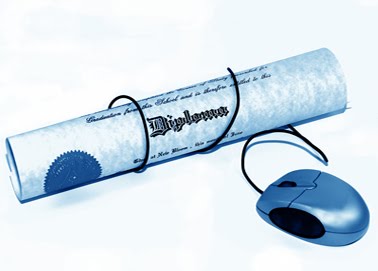There are multiple types of digital certificates that vary depending on the geographic place where we are and the intended use of it. In addition, each Certification Authority has its own certification policies and its own autonomy to decide the types of digital certificates it wishes to issue. We are going to make a summary of the most used CAs in Spain, emphasizing those that are most interesting for small and medium-sized companies.
For business or personal use: Firmaprofesional
Some of the solutions issued by Firmaprofesional are used for qualified electronic signatures. These can be of a business or personal nature. Let’s take a look at the business ones:
1. Chartered Corporate certificates
The Corporate Member Certificates are recognized certificates of natural person according to Law 59/2003 of Electronic Signature that identify the subscriber as a Professional Association and the signatory as a professional member.
They can only be used for the signer himself, acting like a chartered professional
Either the professional or the Professional Association (on behalf of the member) may request it.
2. Legal representative Corporate Certificate
Intended for individuals. They allow to telematically identify the subscriber as a corporation(companies, organizations, …) and the signatory as the Legal Representative of a company.
3. Natural Person Corporate Certificate
These are recognized certificates that identify the subscriber as being linked to a certain organization, whether as an employee, associate, collaborator, customer or supplier.
4. Legal Person Corporate Certificate
They also allow electronic invoicing. Legal representatives (administrators) and/or voluntary representatives with powers for this purpose (general or special attorneys-in-fact) may request it.
5. Mobile Signature Corporate Certificate
They are intended for mobile signature services compliant with ETSI M – COMM MS (Mobile Commerce – Mobile Signature Service) standards, using the cell phone SIM card as a DSCF (Secure Signature Creation Device) or our smart card reader for iOS mobile devices.
6. Corporate Certificate of Corporate Seal of Approval
They are issued to organizations and their purpose is to sign electronic documents automatically on behalf of the company, without reference to any specific individual. They are intended to perform the same functions as “Company Seals” on paper documents.
7. Electronic Invoice Corporate Certificate
These are recognized certificates of a natural person with powers of representation of an organization onlyto sign electronic invoices. They are basically similar to the Corporate Certificates of Natural Person, except for the fact that the signatory is explicitly authorized to sign invoices on behalf of the entity.

FNMT
The FNMT-RCM issues different types of digital certificates, which depending on their recipients , can be:
- From natural person
- From legal entity
- From an entity without legal personality
In this case, a company would be interested in the second one. Currently, the FNMT-RCM issues electronic certificates of legal entities recognized in the tax field. Therefore, the accreditation procedure can only be carried out through the Post Office, in addition to the already existing procedure in the offices of the Tax Agency, the Autonomous Community of Navarre or the National Securities Market Commission.
It links to its subscriber (taxpayer) some signature verification data and confirms its identity. The subscriber of the same will be a legal entity, understood as a group of persons grouped together to form a unit with its own purpose, which, as an entity, acquires legal capacity and capacity to act different from that of the members that compose it.
Viafirma Fortress: the solution to store digital certificates in the cloud
Viafirma’s solutions have a rich variety of options when digitally signing documents.
In this article, it is of great interest to mention Viafirma Fortress, our centralized signature solution or in the cloud, which is responsible for the storage and management of digital certificates thanks to cloud technology, allowing the user to sign anywhere in the world and from any device.
Moreover, it is guarantee the maximum security, being only accessible with doble authentication factor to access to them. Furthermore, we can include different use policies, so that we can limit its use in certain aspects (certain websites, time slots, specific applications, etc.).
As we have seen, digital certificates are a very practical, versatile and secure tool for a wide variety of online procedures, both public and private. For that reason, from Viafirma we have developed unique solutions that allow to get the maximum benefit.
